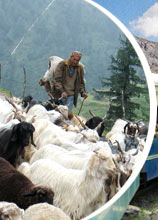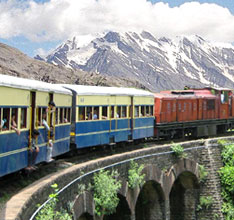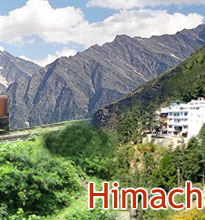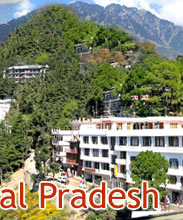 Tabo
Monastery is situated in the Spiti Valley of Himachal Pradesh. The great
teacher and translator Rinchen Zangpo founded the monastery in 996 AD
and till today, it holds the distinction of being the largest monastic
complex in the Spiti region. Tabo Monastery is also known as 'Tabo Chos
Khor', which means 'Doctrinal Circle' or 'Doctrinal Enclave' of Tabo,
and houses Deva Gyatsho. Tabo is, in fact, a tiny hamlet in itself, with
about 350 people as its residents. The sprawling complex of the
monastery has about nine temples, 23 chortens.
Tabo
Monastery is situated in the Spiti Valley of Himachal Pradesh. The great
teacher and translator Rinchen Zangpo founded the monastery in 996 AD
and till today, it holds the distinction of being the largest monastic
complex in the Spiti region. Tabo Monastery is also known as 'Tabo Chos
Khor', which means 'Doctrinal Circle' or 'Doctrinal Enclave' of Tabo,
and houses Deva Gyatsho. Tabo is, in fact, a tiny hamlet in itself, with
about 350 people as its residents. The sprawling complex of the
monastery has about nine temples, 23 chortens.There is also a chamber housing monks and its extension that serves as the chamber for nuns. The series of caves on the sheer cliff above the monastery is believed to have once served as the residence of the monks and also comprises of an assembly hall. One can still see the traces of the paintings that once adorned the rock face. The earliest buildings in the complex of Tabo Gompa include the 'Temple of the Enlightened Gods' or 'Tsug Lha-khang', housing a vestibule, an assembly hall and a sanctum.
The stucco and wall paintings here depict the life of Buddha. Another such building is the 'Golden Temple' or 'Ser-khang'. Extensively renovated by Senge Nagyal, the ruler of Ladakh, in the 16th century, the temple is believed to have been layered with gold. It has beautiful murals adorning its walls and ceiling. Then, there is the 'Mystic Mandala Temple' or 'Initiation Temple or Kyil-Khor-khang', the site for the initiation of monkhood. The 'Bodhisattva Maitreya Temple' or 'Byams-Pa Chen-po Lha-khang' of Tabo Monastery houses more than 6 m high idol of Bodhisattva Maitreya.
Last but not the least is the 'Temple of Dromton' or 'Brom-ston Lha-khang', founded by Dromton - an important disciple of Atisha, in the early 11th century. The temple has intricately carved doorway and splendid murals. a number of buildings were added to the Tabo Monastery of India, at a later date. These include the 'Chamber of Picture Treasures' or 'Z'al-ma', an anteroom attached to 'the Temple of Enlightened Gods' that is covered with Tibetan school of paintings.
The 'Large Temple of Drom ton' or 'Brom-ston Lha-khang', the second largest temple in the complex, has the figure of Sakyamuni painted on the front wall. 'Mahakala Vajra-bhairava Temple' or 'Gon-khang or Temple of Horror 'enshrines the protective deity of the Gelukpa sect and is only entered after protective meditation. Lastly, we have the 'White Temple' or 'Kar-abyum Lha-khang', which has intricate ornamentation of the walls leaving only a low dado, so that monks and nuns can lean against it.









